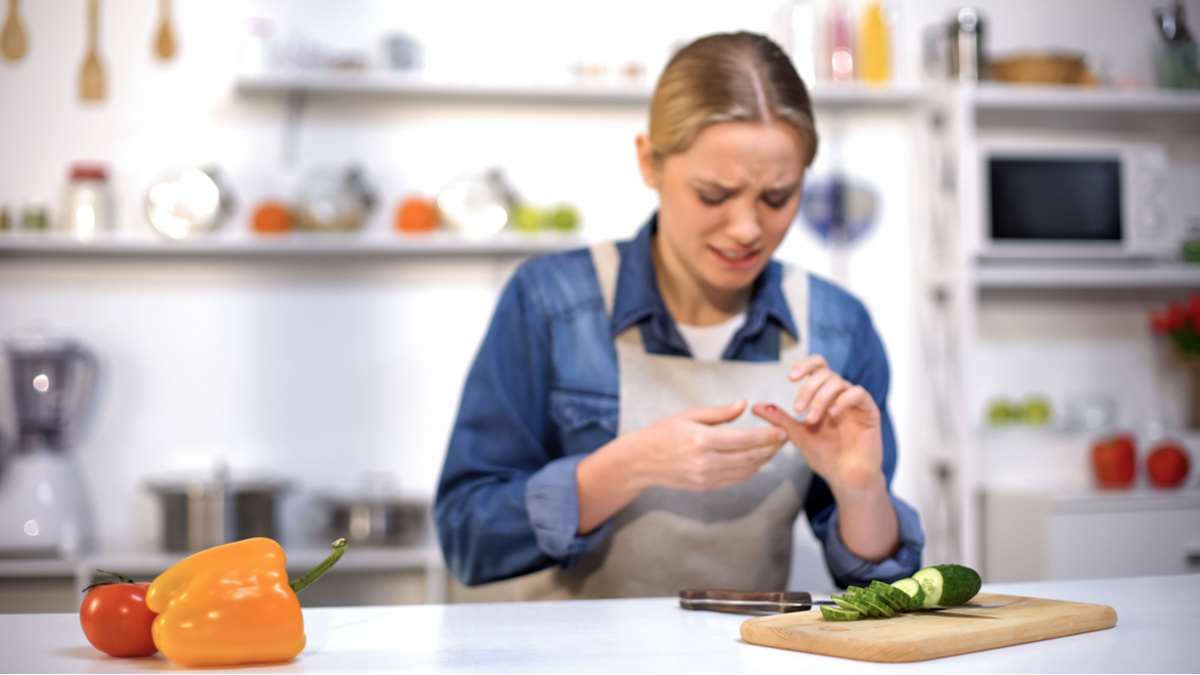While working in a kitchen, your hands can become the victim of a variety of injuries. As any chef knows, kitchens are full of potentially dangerous objects that could cause hand injuries. From knife injuries and burns to tendonitis from overuse, it is important to consider the dangers your hands may face. Staying alert, knowing proper techniques, and keeping your equipment in good repair will help you minimize your chances of injuring your hands while working in the kitchen.
Common Knife-Related Hand Injuries
Using knives in general can put you at risk for getting nicks and cuts on your hands. Many knife-related injuries in the kitchen are minor and may require minimal treatment. Other knife-related injuries may include deep cuts, partial or total amputation of fingers or accidental cutting of tendons, nerves, and/or ligaments and may require hand surgery. Sometimes a small-appearing knife wound can lead to significant damage of important structures underneath.
Some food-specific actions may further put your hands at risk for cuts simply by their nature. The following list outlines some common knife-related hand injuries:
- Avocado hand is related to the knife slipping while trying to remove the pit of an avocado. It is important to never use the tip of a knife to remove an avocado pit.
- Mandoline injuries are wounds caused using a mandolin slicer, typically for vegetable slicing. A Mandoline is very sharp and so these wounds can be large and happen in the blink of an eye.
- Bagel-related injuries occur, just as they sound: while slicing bagels. Bagel-Related Injury (BRI) has actually become a medical term created for this common occurrence.
- Separating frozen foods involves injuries from using a knife to separate frozen foods, such as burger patties.
Burns in the Kitchen
Using kitchen appliances such as ovens, stoves and fryers may result in burns of the hands or other parts of the body. Serious burns may require surgical treatment from a plastic surgeon. Kitchen burns may occur from these situations:
- Splattering grease burns from frying food
- Touching your arm/hand to the hot oven when removing a dish
- Working with boiling water
- Touching hot dishes without a protective mitt
Other Common Kitchen-Related Hand Injuries
The following are other forms of hand injuries that may be experienced when working in a kitchen:
- Tendonitis from a new, significant increase in hand use. This is most common in non-professional chefs.
- Cuts from glass that breaks when being washed by hand.
- Bracing a fall with hands after slipping on a spill.
Tips to Prevent Common Kitchen-Related Hand Injuries
Although working with knives and hot items is inherently dangerous, it is important to take precautions to avoid hand injuries in the kitchen:
- Stretch wrists and hands often
- Use ergonomic and easy-grip tools when possible
- Know where knives are kept (especially in soapy water)
- Keep protective gloves or mitts handy
- Cut food using proper technique, generally cutting towards a cutting board or away from oneself
- Keep fingers curled on the off-hand when cutting
- Alert other people in the kitchen if you are walking with a knife or walking behind them with hot dishes or pans
If you have sustained a hand or wrist injury or believe that you are experiencing symptoms in your hands from working in a kitchen environment, contact the office of Jeffrey M. Jacobson, M.D. Click here to request an appointment.

